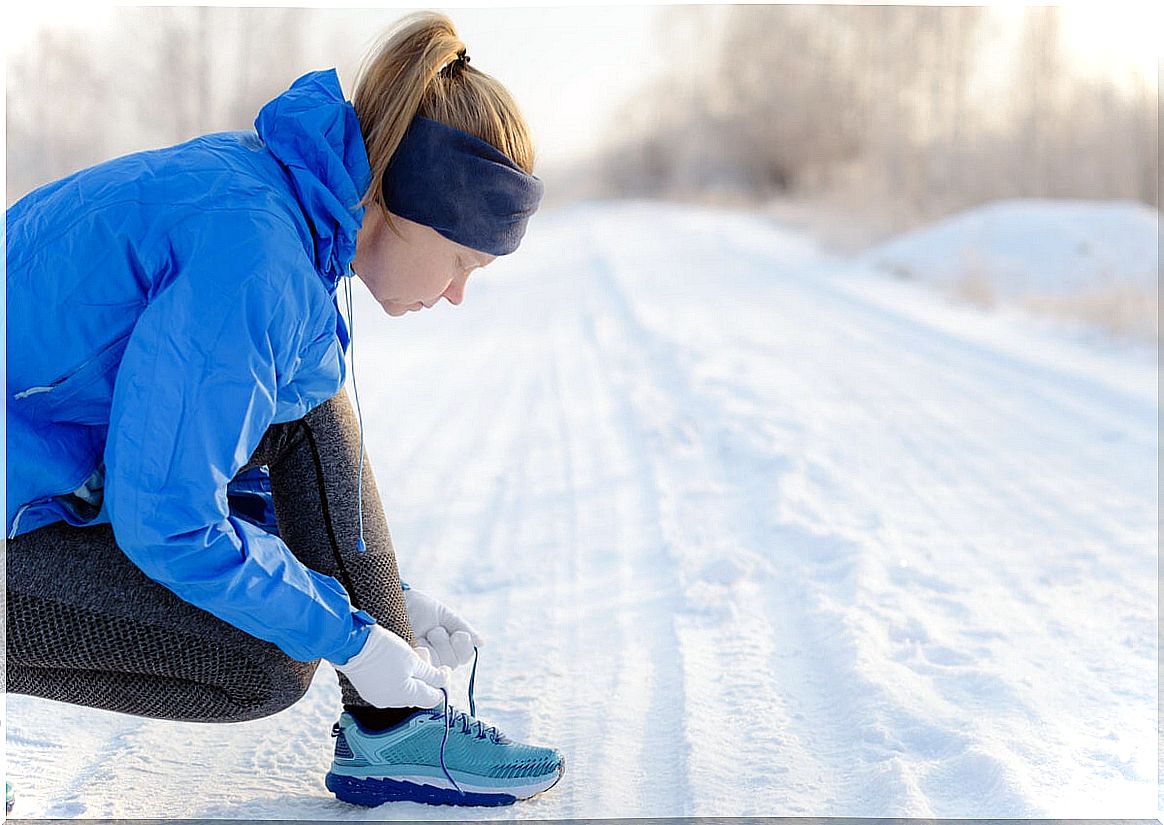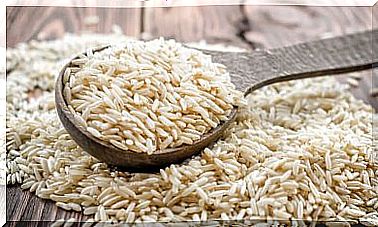Jogging During The Winter: Benefits And Recommendations
Jogging during the winter has many health benefits, even though the threat of cold weather suggests otherwise. However, a series of recommendations must be taken into account to avoid the risks of low temperatures and inclement weather.
In fact, to go jogging during the winter it is very important to be well prepared with protective clothing. The cold should not be a reason to stop running, however much it is argued that winter weather is an excuse to give up exercise.
General tips for jogging in winter
The health consequences of jogging in the winter may appear to have to do with colds and respiratory illnesses. However, there are problems that can be much more serious, such as the risk of falls due to ice or other problems derived from the weather.
We must not lose sight of the fact that cold weather makes it difficult to warm up the muscles, which makes us more vulnerable to muscle and joint injuries. Here are some general tips.
Check the weather conditions
Before going for a run, check the weather forecast. It is not just a question of whether rain is expected. Humidity, temperature, wind chill, fog or wind are important factors to consider.
Analyze your own personal capabilities
No matter how much you want to go running, it is important that you take into account if you are in appropriate physical condition. The colder it is and the more unfavorable the weather, the more effort it takes to go jogging during the winter.
Train to be in good physical shape
Not everything is running. Being in good physical shape means doing toning and flexibility exercises. This helps build stronger and more flexible muscles and improves overall physical ability. In winter this is very useful to prevent injuries.
Do a good warm up
In cold climates it is more difficult to warm up the muscles and joints. That is why it is more important than ever to warm up well. You can start indoors, on the porch or covered in the street. This will help you to warm up little by little and to do dynamic stretches.

Stop the march if you notice that something is wrong
If you notice that something is wrong, stop. And if you feel bad to walk back, call someone to come and look for you. Whether it’s chest pain, shortness of breath or difficulty in a joint. The cold will only exacerbate the symptoms.
It’s easy for you to want to put the pain or difficulty down to stress and feel like running will pass. But the risk is not worth it and there are other ways to relieve the pressure.
Don’t forget the cool down and stretching
A good cool-down or cool-down phase, as well as a good stretch, are also vital when you go for a run in winter. The problem is that it may seem that the cold will play a trick on us by stopping. That is why it is important to do it well and in a calculated way.
Keep in mind that if you don’t cool down little by little and stop too quickly, your muscles will become more vulnerable to injury. Stretching can be done when you get home, at the portal or inside. But it is just as important to do it so that the muscles can rearrange.
Stay hydrated
Staying well hydrated is very important in winter too. The fact of not feeling as thirsty as in summer does not mean that it is not necessary to drink water. In fact, the colder it is, the more water you have to drink.
When we are not well hydrated, our body slows down and, with it, also the metabolic functions. This means that we have less energy and that performance decreases.
Whenever you go for a run, carry your mobile
The mobile will allow you to call for help in the event of an accident or injury. In addition, it is important that you are located in case the mishap you suffer does not allow you to call. Finally, always let someone know when you go out, so they can be on the lookout.
Dress Tips for Jogging During Winter
To go jogging in winter you must be very clear that it is not about wearing a lot of clothes, but about wearing the right clothes. The same goes for footwear. The right one according to the weather and the type of road you are going to run on is essential.
With this in mind, here are a series of winter running clothing tips that are essential for training in good conditions.
Light clothing, layered and of the right material
Clothes should be light and adaptable so they do not limit movement when running. In addition, it is best to wear several layers. It is important that you wear a first breathable layer, a second insulating layer and a third that protects you from the wind.
Reflective elements
It is very important that you always wear reflective elements on your clothing, even if you run during the day and in good weather. In this way you will always be visible, both to people and to vehicles.
Accessories to protect limbs
Hands are very sensitive to cold, so it is highly recommended to run with gloves. In addition, it is important that you protect your throat, since cold air can promote health problems.
Also, covering your head will help you retain temperature better. Just as important is that you take care of your ears from the cold to prevent infections.
Suitable footwear
Running on asphalt is not the same as running on dirt. And it is not the same to run on snow or on wet ground. Choose your shoes well and, if in doubt, consult a specialist.
Benefits of jogging in winter
Running in winter has additional benefits to those of running in warmer seasons. The main ones are the following.
It can help you burn more fat
Cold temperatures can turn unwanted fat into a different type that burns calories, known as brown fat . Brown fat is metabolic tissue. In fact, many studies suggest that exercising in cold climates makes white fat more beneficial for your health.
Jogging in the cold is easier
Many use the cold as an excuse for not running. However, despite everything, running in the cold is easier than doing it in the heat, because the work that the body has to do to maintain temperature in the second circumstance is greater than that it has to do in winter weather.
Also, although the cold can be unpleasant at first, the body is very efficient at heating the air, even before it reaches the lungs.
Burn more calories
When we are cold we begin to shiver. This repeated movement gives us warmth, which involves harder work. In addition, we use more energy in winter than in summer to run because we need that extra fuel to maintain temperature.
It can help fight sadness and anxiety
It is normal to feel sadder during the winter. In fact, there is a type of seasonal affective disorder that is a type of depression caused in late fall or early winter.
Going for a run in cold weather helps you fight this and any other problems that have to do with sadness, anxiety, stress, or depression.

Risks and contraindications of jogging in winter
Some health conditions can be affected by running in cold weather. For example, research shows that acute and prolonged exposure to cold affects cardiovascular responses. In this sense, exercise would increase cardiovascular tension.
You also have to keep in mind the problems of breathing cold air. It is dry and exercise causes the loss of water and heat from the lower respiratory tract.
As one study shows, hyperpnea (increase in the amount of air ventilated per unit of time) with cold, dry air represents a significant environmental stress for the respiratory tract. Repeated hyperpnea of the peripheral airways with dry air causes inflammation.
Another aspect to keep in mind when jogging in winter is the increased risk of injury, due to both the weather and the condition of the road surface. As we have already discussed, low temperatures make it more difficult to keep muscles and joints warm.
In extreme climates, do not lose sight of the risk of injury from hyperthermia or frostbite. If you get wet while running and do not wear adequate protection or you have a fall and cannot return, you risk the low temperatures causing this damage.
It is important not to stop training
Jogging in winter has many benefits, as long as training is approached properly and all necessary precautions are taken. If one day you can’t, either because of the weather or because of our physical condition, nothing happens. There are other alternatives. The important thing is to know what to do and not make excuses.
And if you really don’t want to run outdoors in winter, you have many other alternatives so you don’t get stuck. What counts is that you don’t stop training.









